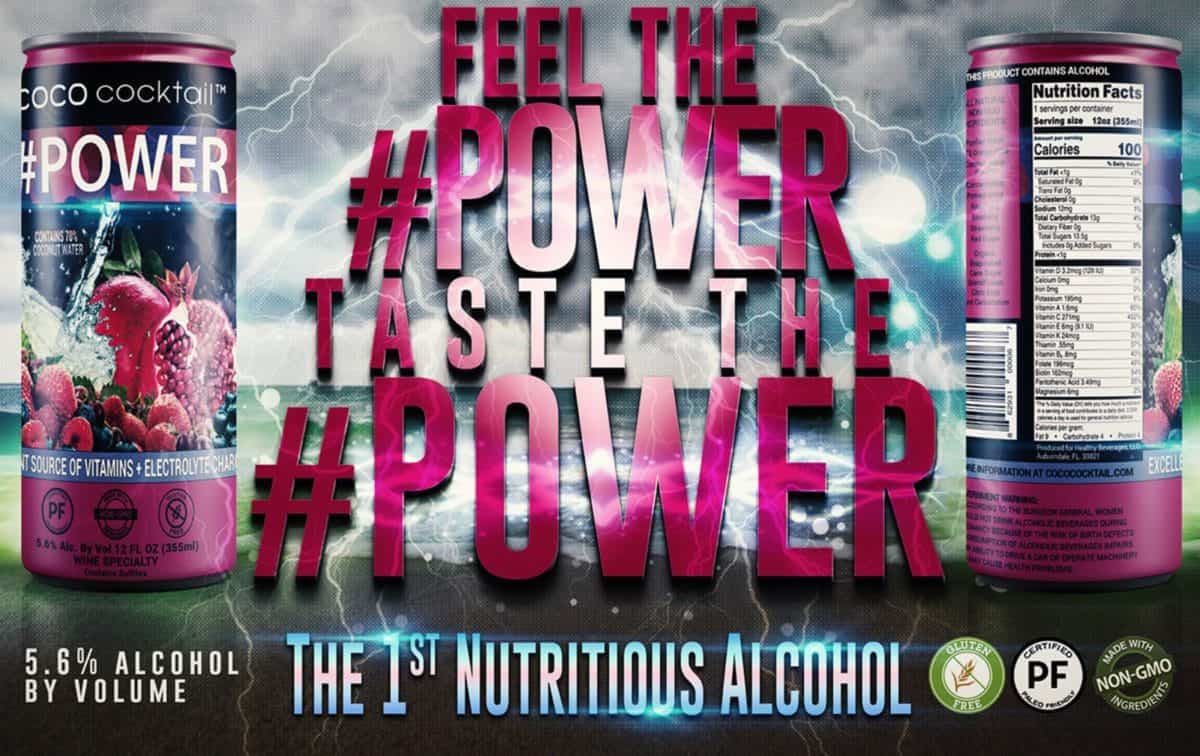The World’s First Healthy Alcoholic Beverage
COCO Cocktail is a healthy alternative to the traditional alcoholic beverage. With many clear benefits, consumers debate whether or not this drink will become a first alcoholic beverage of choice in the market. As stated in a news release, COCO Cocktail contains a noticeably larger nutritional value when set side by side against a top competitor, Pinot Noir. In addition to being created with 70% coconut water, COCO Cocktail also contains SuperFruits (considered to be very beneficial to health and rich with antioxidants), as well as 5.6% ABV from OTS Orange Wine. COCO Cocktail holds minerals and vitamins, both of which derive from non-GMO and all-natural food sources, without containing enriched, artificial, or synthetic ingredients. COCO Cocktail can be purchased in several different retail locations within Ohio, Florida, Indiana, and Texas.
Healthy Alcoholic Beverages in the Market Today
For the longest time, many of the top-branded craft cocktails were created using significant amounts of processed sugars. In this day and age, consumers are not content with their products being highly infused with artificial sweeteners. The young adult sector of today is constantly in search of craft cocktails that are made using high-end ingredients, while at the same time, not packed with sugar. Also, now more than ever, wine and spirit consumption is rising exponentially. Companies are choosing to take advantage of this up and coming market. Healthy Beverages appeals to and attracts the attention of consumers in this market by offering two separate flavors of their vitamin-enhanced, healthy wine.

Healthy Beverages, LLC Achieves FDA Guidelines to Claim COCO COCKTAIL(TM) #POWER as “The World’s 1st Nutritious Alcoholic Beverage” (PRNewsfoto/Healthy Beverages, LLC)
According to the CEO and co-founder of Healthy Beverages, Franz Tudor, many consumers are looking for clean and natural ingredients. Tudor believes that the removal of artificial and GMO-filled ingredients would certainly not “take the fun away [from the COCO Cocktail].” Tutor states that natural foods possessing benefits to the heart and muscles of the body while also reducing bloating “seems like fun” to him.
Alcoholic Beverage Market
It is predicted that sales for all categories of alcoholic beverages are going to rise as a result of the growing number of consumers experimenting with alcoholic beverages. Whether or not healthy alcoholic beverages are going to be consumed more than their traditional counterpart as time goes on is still up in the air; however, the fact remains that new consumers will be drawn in due to the price as well as the taste of the beverage. Despite this, Healthy Beverages is making a wise decision of appealing to the niche of health-conscious and wine-loving consumers by testing out their new beverage.
Benefits of Healthy Alcohol
Research has already determined that a moderate consumption of red wine is tied in with many advantages such as boosting life expectancy, combating diabetes, heart disease, and several other illnesses. Researchers are nearing the completion of a pill that mirrors the positive effects of alcoholic beverage. However, in the end, some consumers will find difficulty giving up their drink of choice for a healthy alcoholic alternative, regardless of how great the drink is.
Inspired by www.fooddive.com


